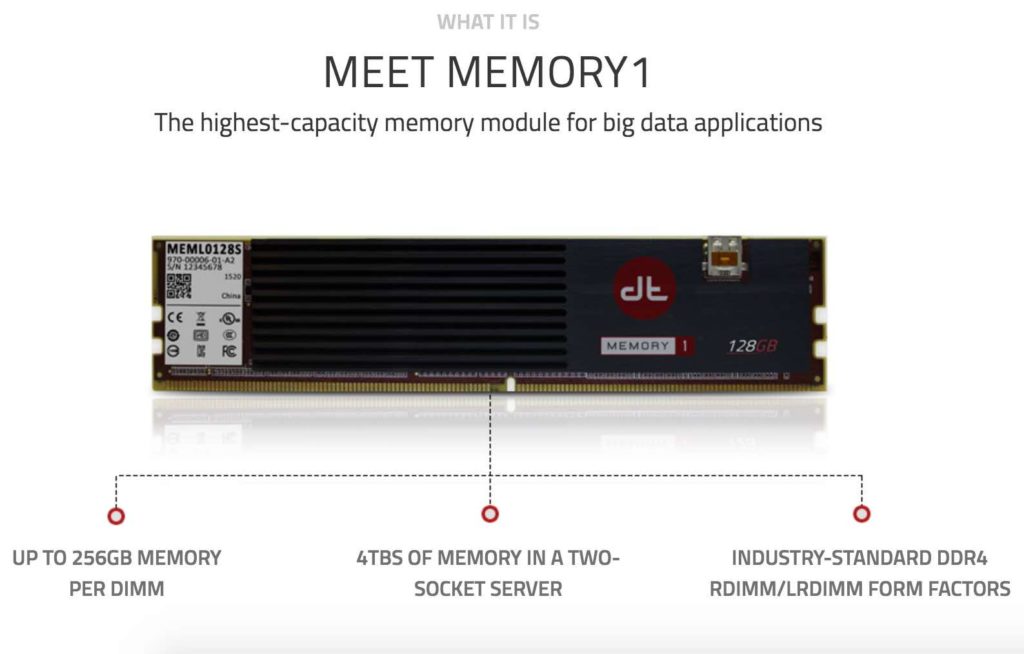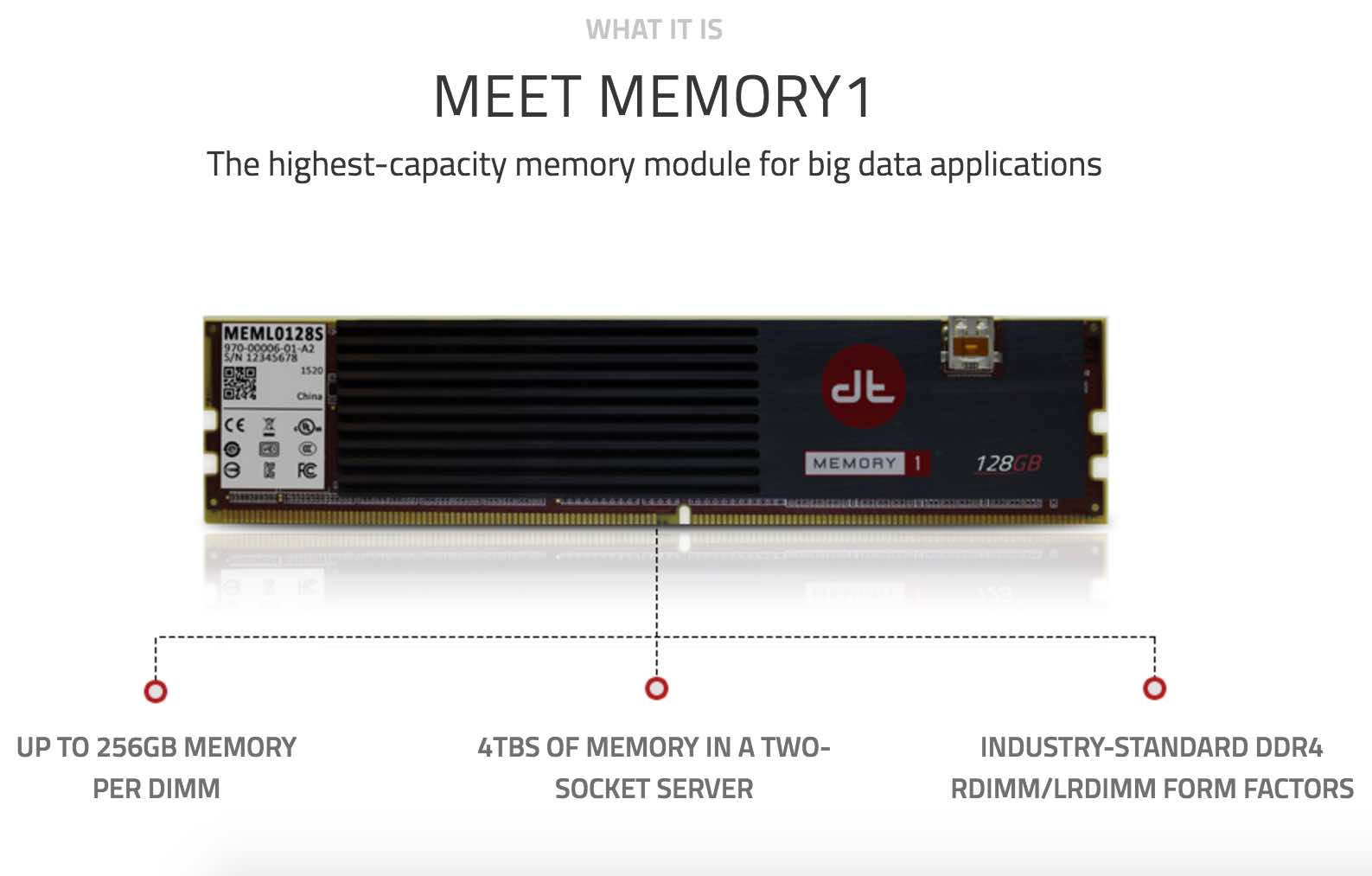 Today Diablo Technologies announced the production release and volume availability of its Memory1 128GB DDR4 system memory module. The 128GB module and accompanying Diablo Memory Expansion (DMX) software provides 1TB or 2TB of system memory in a single two-socket server – unleashing the power of Big Memory for Big Data. Memory1 is now available to OEMs, system integrators and end-users for production deployment.
Today Diablo Technologies announced the production release and volume availability of its Memory1 128GB DDR4 system memory module. The 128GB module and accompanying Diablo Memory Expansion (DMX) software provides 1TB or 2TB of system memory in a single two-socket server – unleashing the power of Big Memory for Big Data. Memory1 is now available to OEMs, system integrators and end-users for production deployment.
Achieving Memory1 production release is a significant milestone for Diablo and the industry. Customers are reporting compelling economic benefits and powerful gains in performance for a wide variety of Big Data applications,” said Mark Stibitz, Chief Executive Officer of Diablo Technologies. “Memory1 provides more processing power per server, allowing data centers to cost-effectively scale-out and tackle workloads previously beyond their reach.”
Memory1 provides the highest-capacity system memory solution on the market, enabling massive increases in server and application capability. Diablo’s JEDEC-compliant, flash-based DIMMs, interface seamlessly with existing server architectures and require no changes to hardware, operating systems, or applications. Memory1 is ideal for environments that require large memory footprints for workloads such as big data analytics, caching, and complex web applications.
Memory1 is the continuation of Diablo’s award-winning innovation and market leadership in bringing NAND-Flash deeper into the Cloud and Enterprise Datacenter.
“Diablo is at the forefront of developing breakthrough technologies for next-generation enterprise computing. The company’s flagship Memory1 is a first-of-its-kind Flash-as-memory technology that delivers four times the capacity of the largest DRAM modules. Diablo’s Memory Channel Storage platform combines innovative software and hardware architectures with Non-Volatile Memory to introduce a new and disruptive generation of Solid State Storage for data-intensive applications.”




